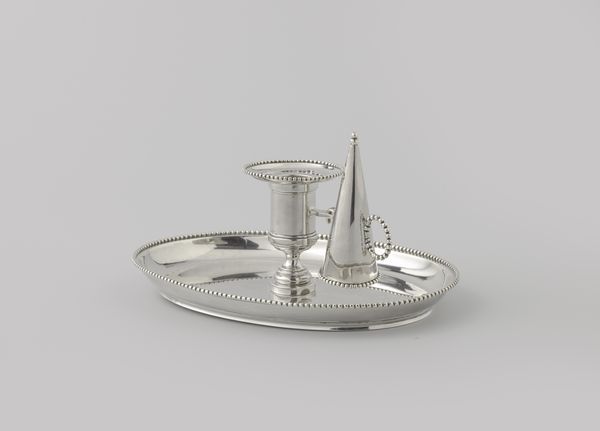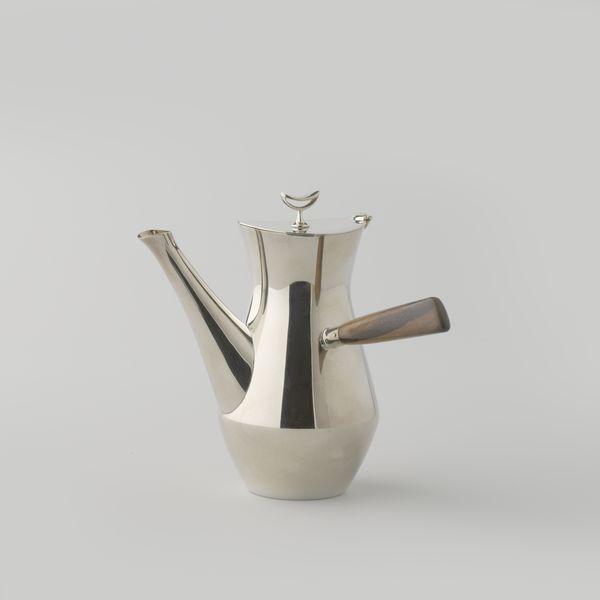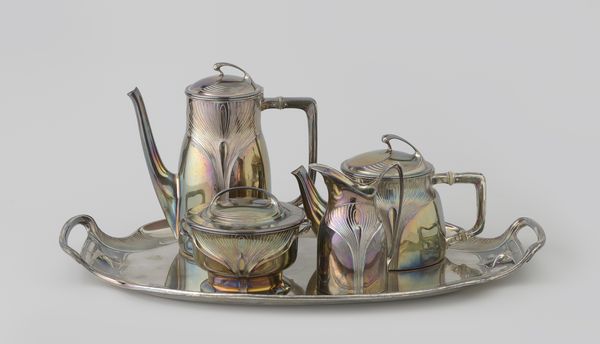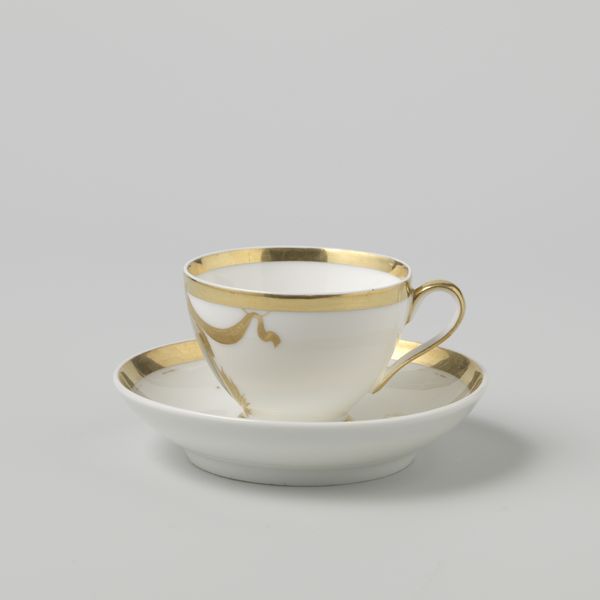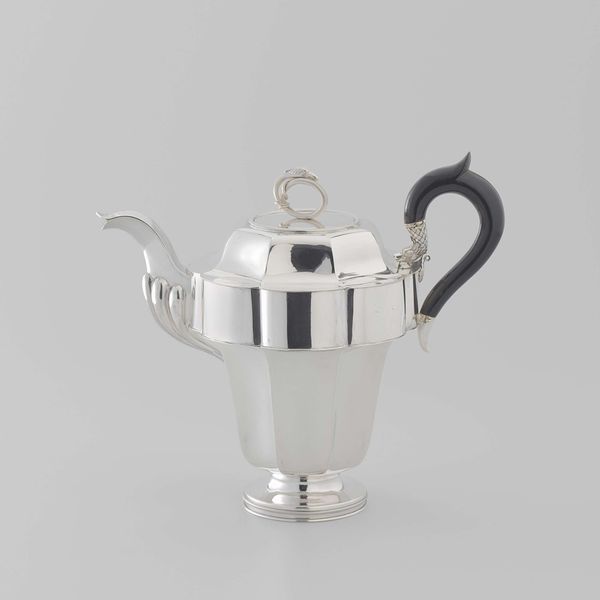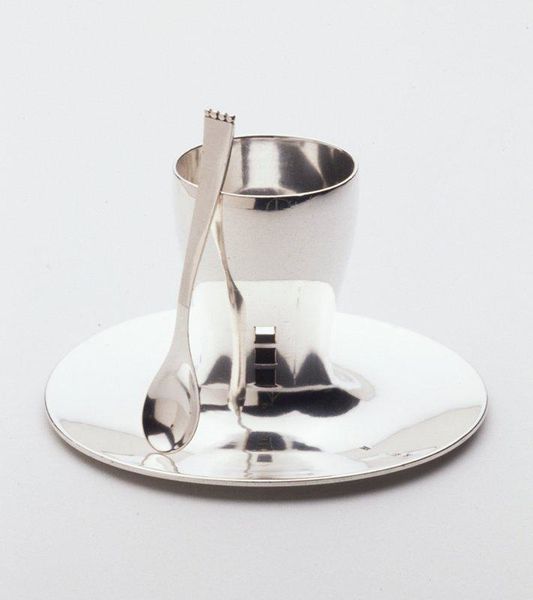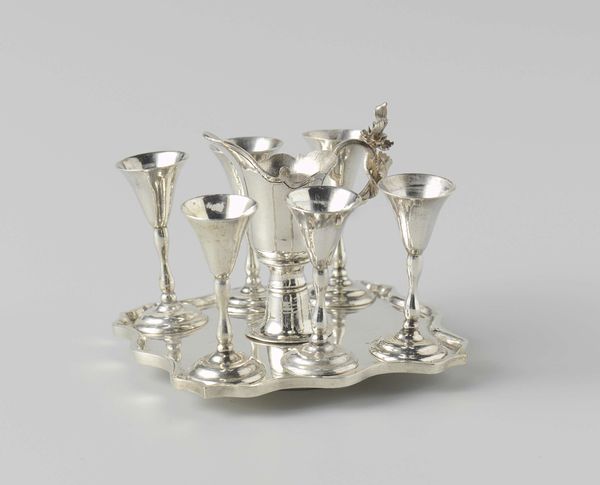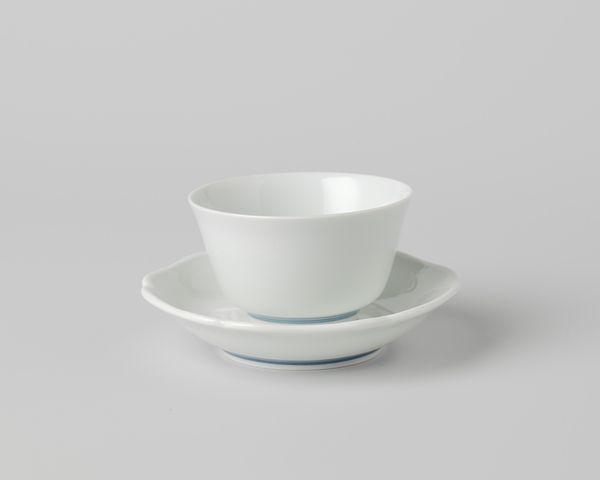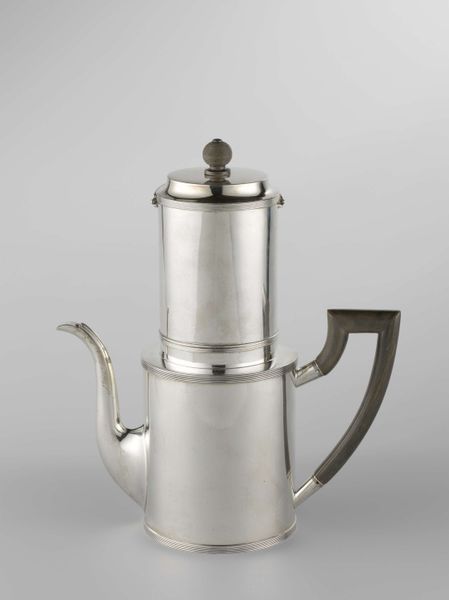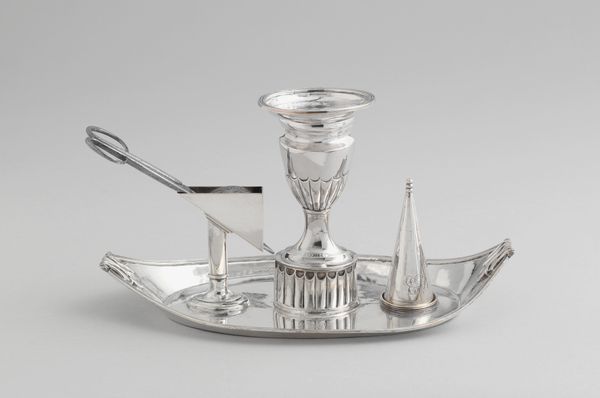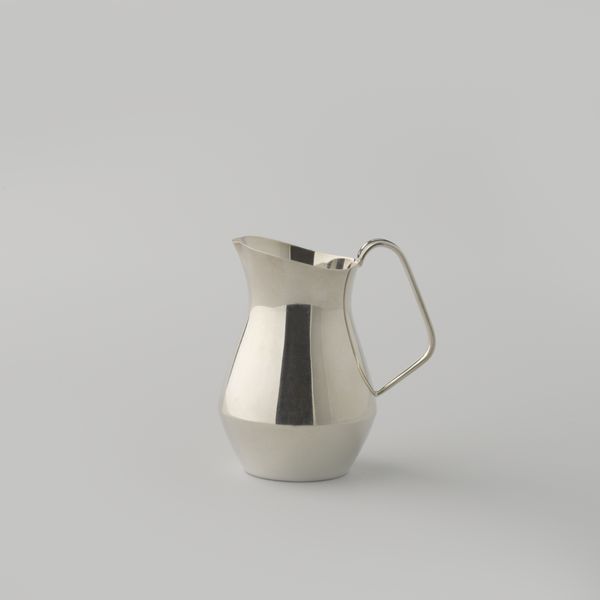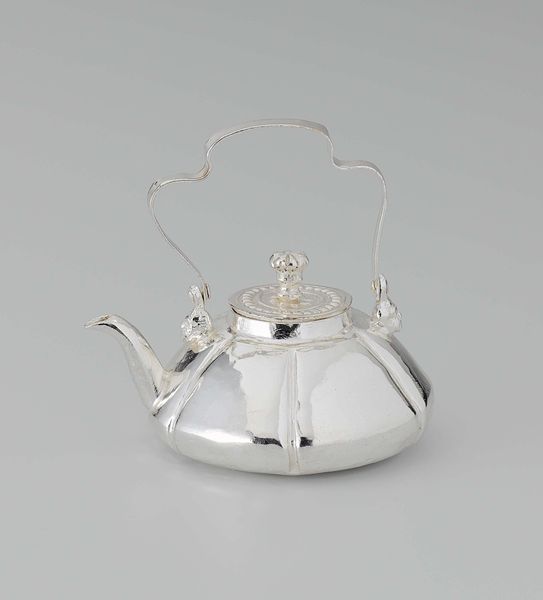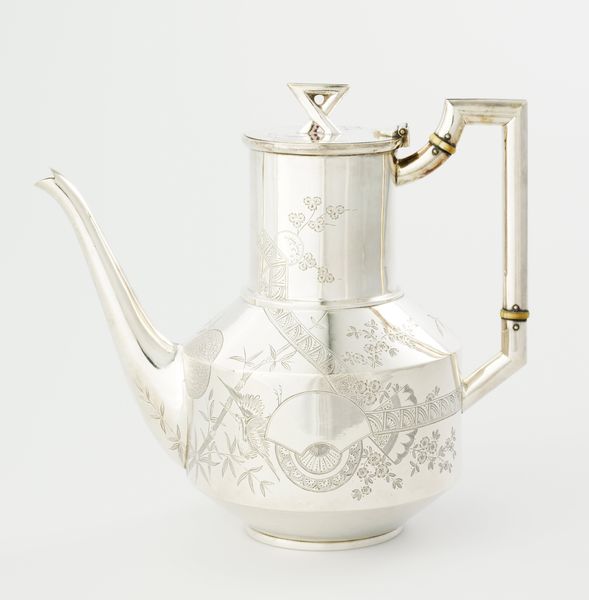
metal
#
metal
#
decorative-art
#
modernism
Copyright: Rijks Museum: Open Domain
Editor: Here we have "Vierdelig mokkaservies," a four-piece mocha service, by Gustav Beran, made from metal sometime between 1960 and 1968. There is something futuristic and cold, almost sterile, about the highly polished surfaces of the metal. What social or historical factors were at play that might inform the creation of such an object? Curator: That's an excellent observation. The austerity and streamlined design resonate with the anxieties of the Cold War era. Can you see how this design, stripped of excessive ornamentation, reflects a shift toward functionalism? Also, how might the mocha service serve as a marker of class? Editor: Yes, I see what you mean about functionalism. Everything seems reduced to its barest essence. This certainly speaks to that mid-century sensibility, and while appearing somewhat austere, it certainly evokes class in its material and minimalist style. Curator: Precisely. Now, consider the labor and resources needed to create such polished metalwork. Who had access to such luxury, and what does it say about the society in which this object was both created and used? Think of the politics embedded in design and the implicit social hierarchies perpetuated through such objects. How can we see art as reflecting the political and social inequalities of the period? Editor: That adds a crucial layer. Thinking about who *couldn't* afford this mocha service is really telling. It wasn’t just about having coffee, but about signaling a certain status, something more than pure utility. Thank you! Curator: And by examining these types of objects we can start deconstructing power structures of the past. Hopefully that allows us to start reflecting on these structures within contemporary society too!
Comments
No comments
Be the first to comment and join the conversation on the ultimate creative platform.
